Palazzo Vecchio Apartments and Terrace
Wed Nov 29, 2017 2:45 pmAt Palazzo Vecchio we were delighted by the Bust of Macchiavelli, enjoyed the view from the terrace, and were awed by the Hall of Justice.
Palazzo Vecchio is the Town Hall of Florence, and there is a wonderful tour and museum inside.
Savonarola, Machiavelli, and Cosimo de’ Medici The Elder all had the honor of being imprisoned in the tower.
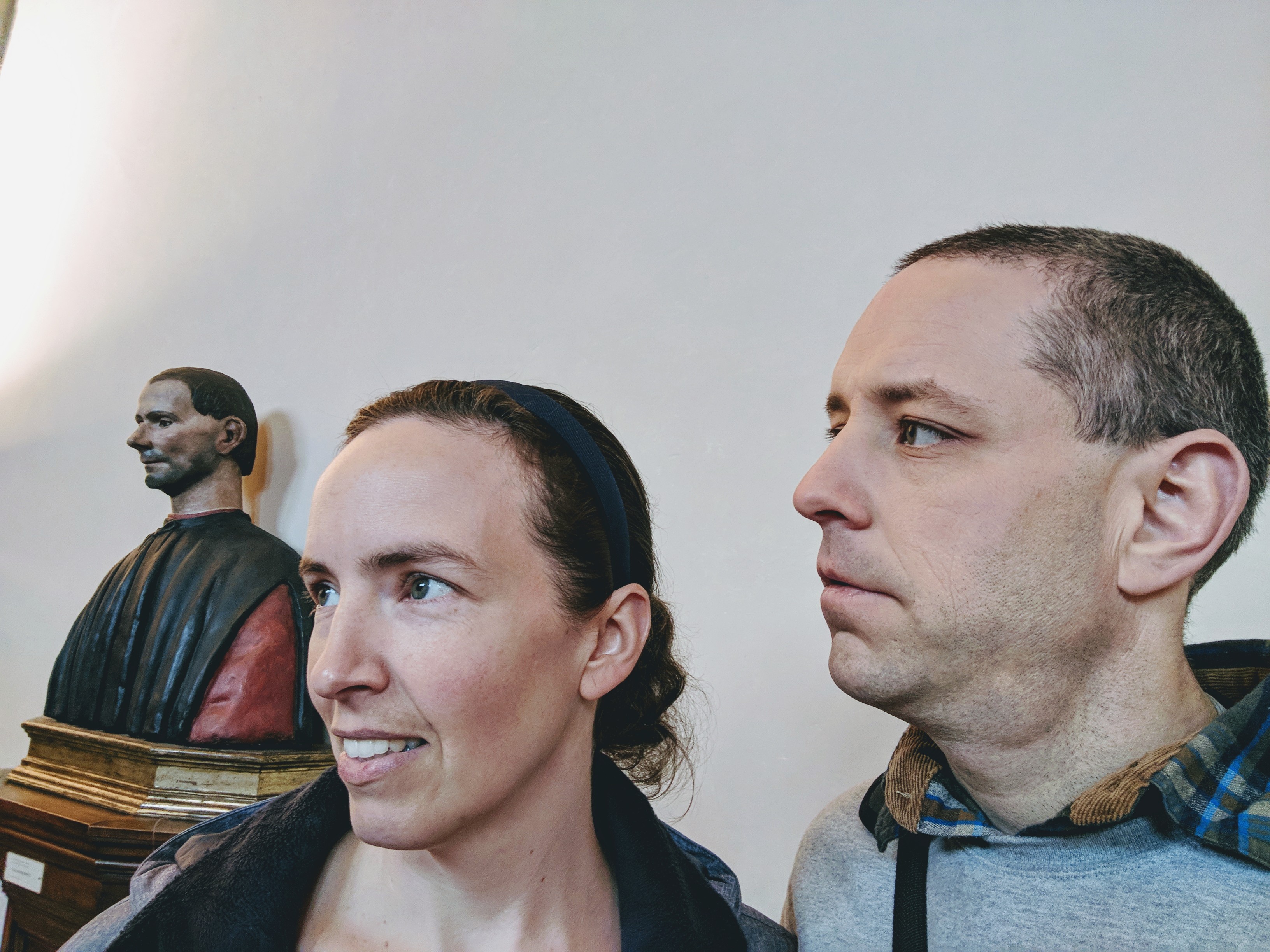
Is there a finer photograph by any means necessary?
Machiavelli was a senior official of the Florentine Republic at the beginning of the 16th Century when the Medici were exiled and cast out. More specifically, Machiavelli was Secretary of the Second Chancery. But I am still trying to sort out if the Chancery was an office merely in the political sense, or if it was in fact a physical space and if so was it this room?
He is most famous for writing The Prince, a book (public domain version on Project Gutenberg) advising Statesmen how to get and retain power, (sometimes by any means necessary).
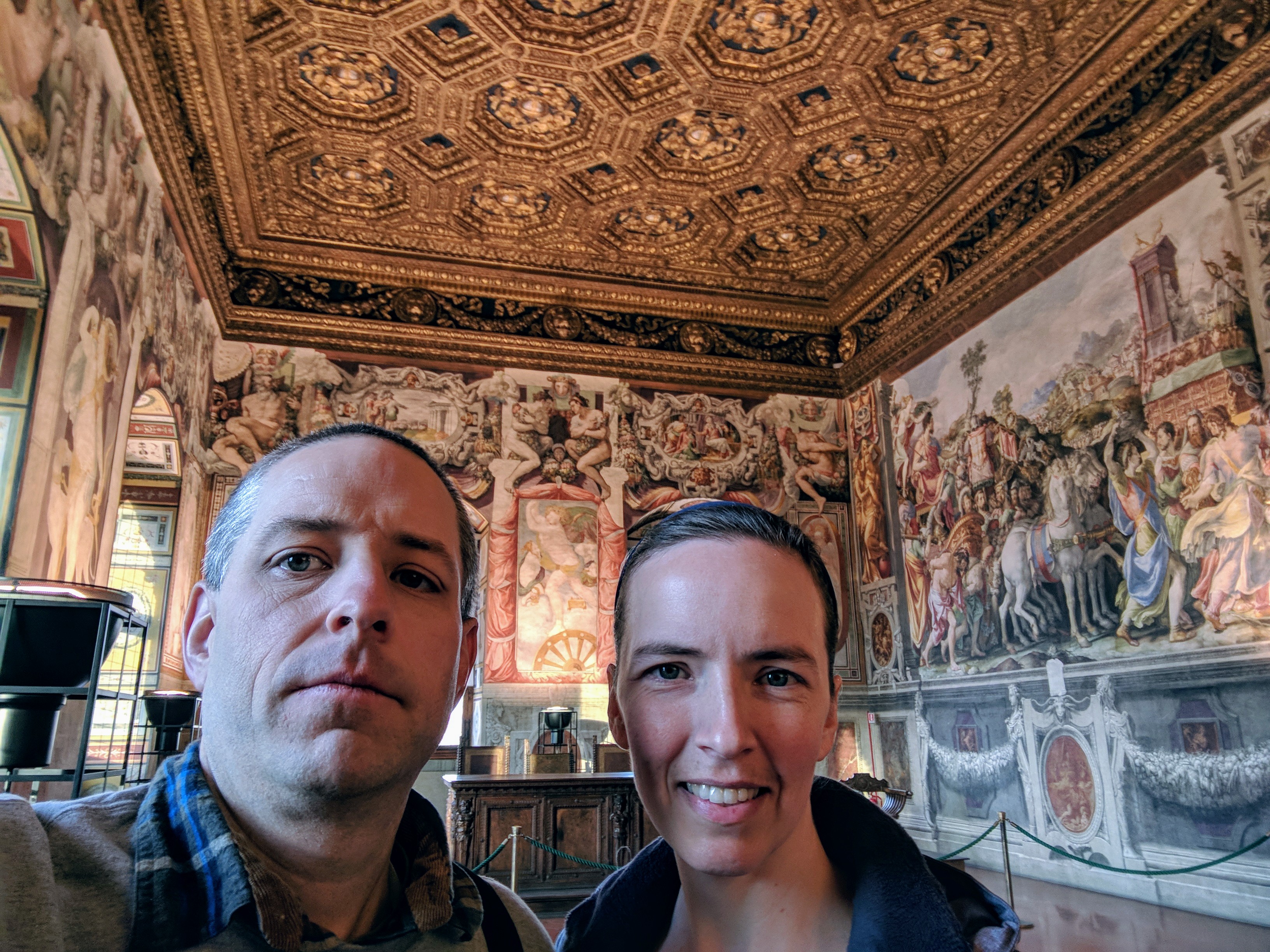
In the late Middle Ages, as cities and commerce blossomed, it became typical for secular Town Councils to arise and either rule outright or share power with a Noble Ruler.
In Florence this political entity was known as the Signoria of Florence or Priori who were chosen from the City Guilds, and met in this room, Sala dell’ Udienza or Hall of Justice. The ceiling is laminated in Gold.
The wall frescos go by the name Stories of Furius Camillus by Salviati who was a mannerist. Think of Mannerism as being very similar to Renaissance Art. But whereas in Renaissance Art figures are realistic and three-dimensional, in Mannerism they might be idealized with for instance muscles that are a little too strong, or a neck that looks a little bit too beautiful because it is a little bit too long.
Anyway, the frescos in question celebrate Marcus Furious Camillus, a statesman and general from the early Roman Republic. Though while at the time Rome was still in the process of consolidating power in Italy and had not yet become a super-power, nevertheless Camillus enjoyed four triumphs, and was dictator five times.
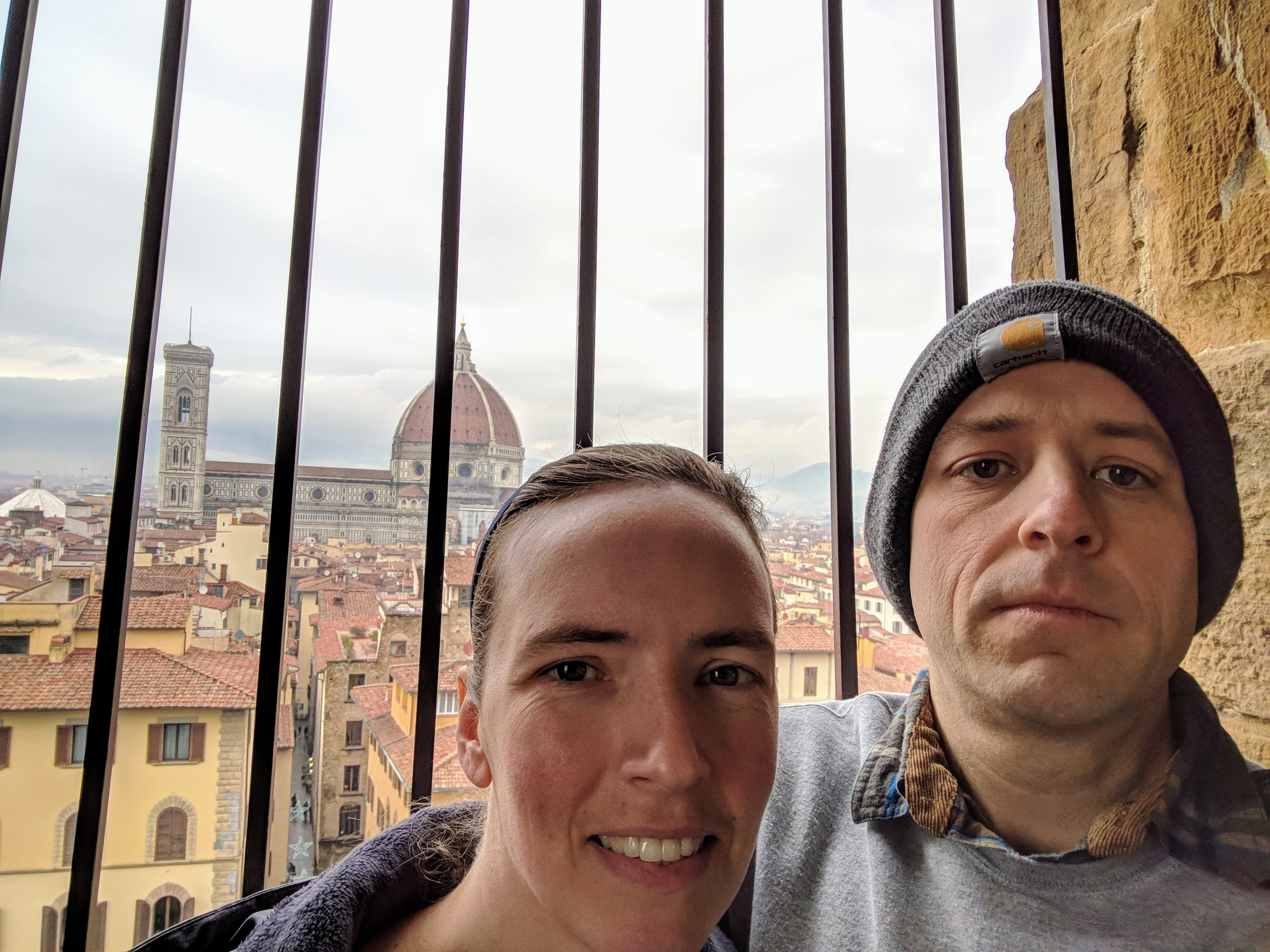
Much as we would have liked to tour the tower, it was closed on account of the weather. Apparently it is slippery when wet.
When looking at Palazzo Vecchio, you will notice that the top is crenellated. Just below is the Patrol Path.
This view looks North towards Florence Cathedral and Bell Tower.
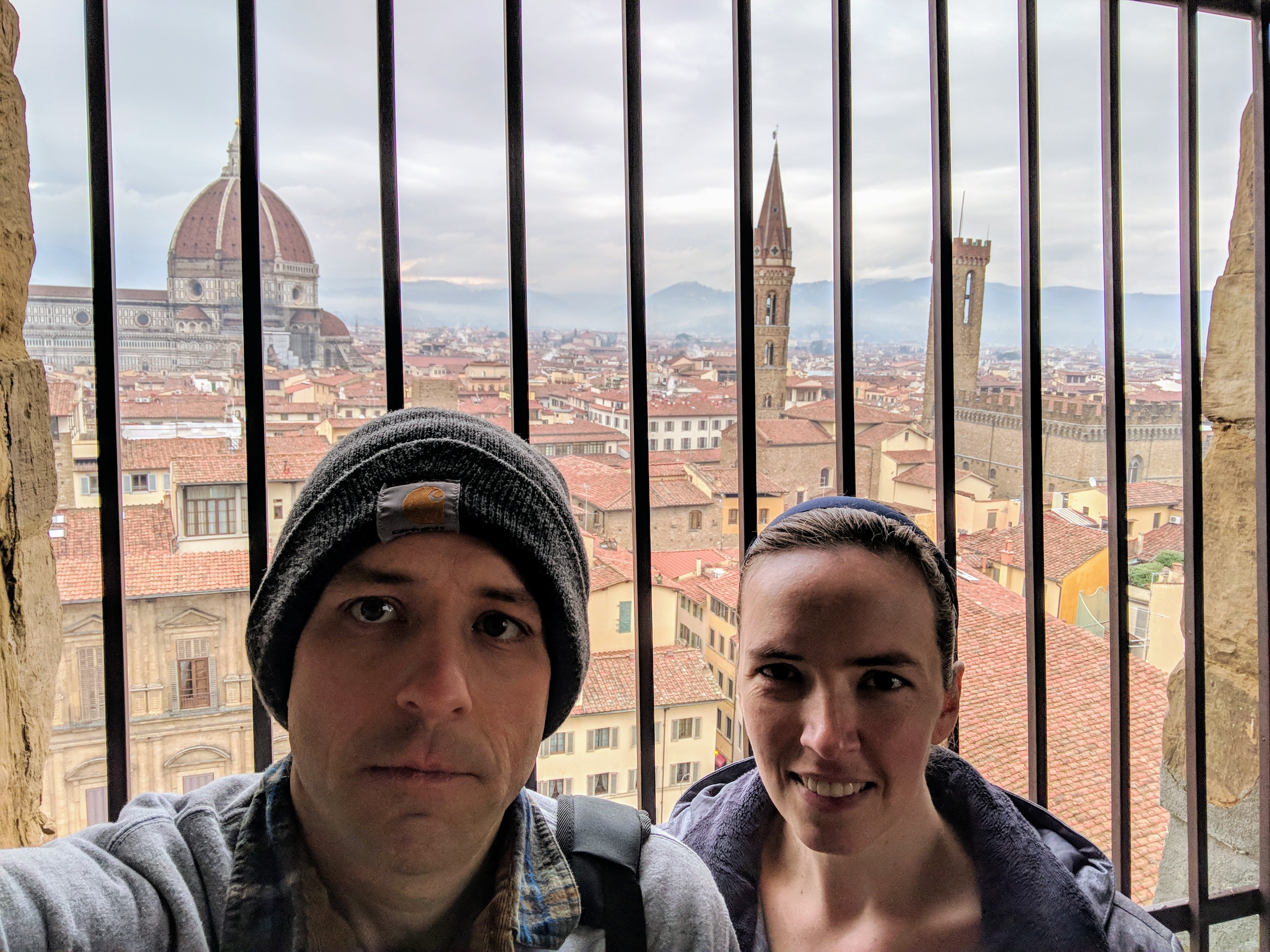
In this view you can see Florence Cathedral or Duomo on the left, and Bargello which is the former City Hall of Florence on the right with it’s own crenellated top and tower.
In between is the tower of Badia Fiorentina, a Benedictine Church and Abbey.
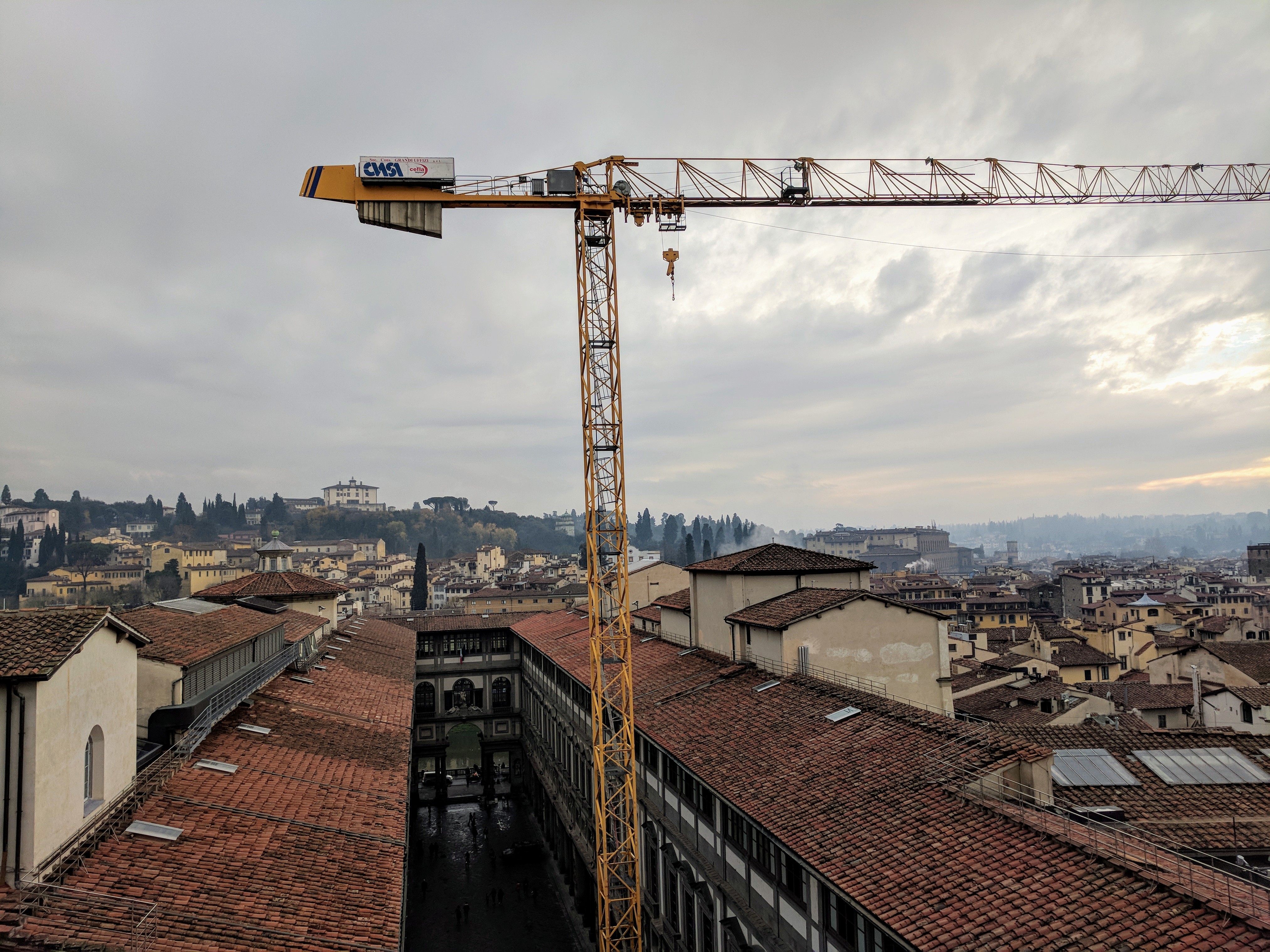
From this angle, if we were to look straight down we would see the final leg of the Vasari Corridor connecting Palazzo Vecchio and Uffizi high above Via della Ninna.
In this passageway, Medici could secretly walk from Palazzo Vecchio, through Uffizi, across the Arno River over Ponte Vecchio, and continue all the way to Pitti Palace.